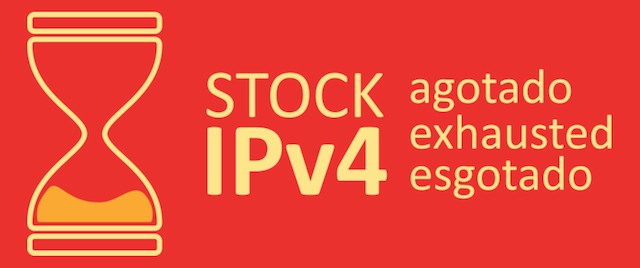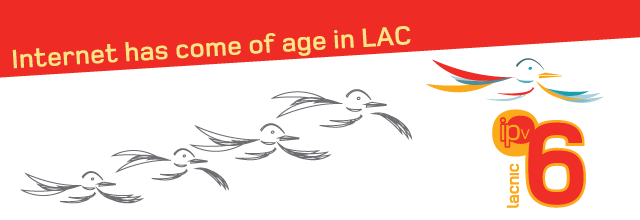With North America out of IPv4, do we trade, translate or transition to IPv6?
▼ It's official: for all intents and purposes, North America is out of IPv4 addresses. Two of the four other regions have been in that situation for some time, and Latin America will be joining North America, Europe and Asia in about a month. That leaves Africa, which still has almost 50 million IPv4 addresses, which are used up at a rate of 5 - 10 million a year.
Does this mean that if you're running a business that requires a regular infusion of new IP addresses, it's time to relocate to Africa?
Not quite. The Internet Engineering Task Force saw all of this coming twenty years ago—which they should, having hobbled TCP/IP with a meager 32-bit address space for a maximum of about 4 billion IPv4 addresses. But they fixed that with IPv6, which increases the address length to no less than 128 bits for a near-infinite number of addresses.
Unfortunately, a system that only speaks the new IPv6 can't directly talk to a system that only speaks the current IPv4. So giving people just IPv6 means they can't talk to the 97% of internet users or the 90% of top 500 web sites that haven't adopted the new protocol yet.
But don't start looking for apartments in Nairobi or Casablanca just yet: it's also possible to trade IPv4 addresses. The big question is: to what degree will that solve the lack of available IPv4 addresses? We know that Microsoft and Amazon have bought large numbers of IPv4 addresses, and there have also been larger numbers of small exchanges. The going rate seems to be around $10 an address, which is expected to go up to about $30.
Microsoft and Amazon run cloud services where large numbers of virtual machines need IP addresses, which they probably couldn't get the "normal" way. In the Asia-Pacific region, there have also been exchanges of small and medium-sized IPv4 blocks. Obviously, paying $2560 for a "/24" (256 addresses), which is the smallest usable block of IPv4 addresses, is not a big deal for content providers.
However, the big ISPs and telcos that use IP addresses by the hundreds of thousands or millions haven't entered this market so far. The big question is: will they? Until now, a company like Comcast paid pennies per address for its multi-million blocks of IPv4 addresses. Having to pay $30 for an IPv4 address to give to every new customer would be a big hit to their bottom line. Worse, what if a year later the going rate is $60? And then $120, and so on? (And I'm not even talking about the headache of having to acquire more and more smaller and smaller blocks as the years progress.)
Rather than spend $30,000,000 on a million IPv4 addresses, a big ISP could probably spend a lot less on Carrier Grade NAT (CGN) equipment that makes it possible for multiple users to share a single IPv4 address. They still 100,000 addresses to connect a million new customers, but they probably have that kind of address space in reserve, or if not, they can take it from existing users and put those behind the CGN, too.
In the meantime, more and more ISPs are rolling out IPv6 for their users. Today, IPv6-only connectivity is not good enough to replace regular IPv4 connectivity, but the day that it will be is approaching. Even today being limited to just IPv6 connectivity for an hour or two wouldn't be too inconvenient for me. Sure, I wouldn't be able to read many news sites or post to Twitter, but I can get my email over IPv6, visit Google, Facebook, Wikipedia.
So my advice to HP: if you can get a billion dollars for those 33 million IPv4 addresses you're holding (after buying DEC), take it. You'll wish you had when IPv6 reaches critical mass and people start asking themselves why they're still bothering with that arcane 1980s network protocol. However, I'm not an economist, but I would think having millions of IPv4 addresses enter the market would lower the price.
Bottom line: small amounts of IPv4 address space will always be available in some form. But assuming you'll be able to either buy low or sell high many thousands or even millions of IPv4 addresses at any point in the future is a risky bet.
This article also appeared on the Kalorama blog. Also see this post on the topic by Louis Sterchi over there.
Permalink - posted 2014-04-28 - 🇳🇱 Nederlandse versie

 In the comments, a reader posted a link to
In the comments, a reader posted a link to 
